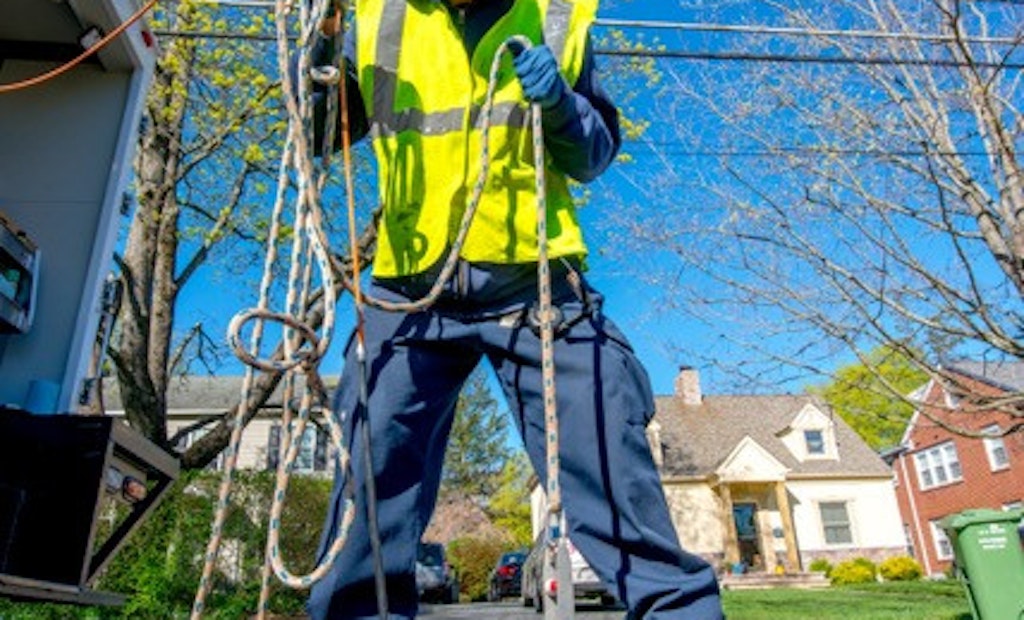Interested in Cleaning?
Get Cleaning articles, news and videos right in your inbox! Sign up now.
Cleaning + Get AlertsWhen evaluating a sewer inspection crawler, it’s important to determine how well it adapts to different challenges — both current and anticipated.
To make this determination, it helps to look at whether the crawler was designed as a standalone system or a modular platform. A standalone system serves a narrow purpose; it does one kind of inspection (CCTV, SAT, side scanning, laser profiling, etc.) within a limited range of applications (combinations of line size, condition and material). So for instance, if you buy a CCTV inspection crawler to do mainline inspection, and you later want to expand into lateral launch inspections, your only option is to buy a new, separate crawler system: crawler, reel, controls and truck.
A modular platform, by contrast, is one that can be custom-configured and expanded to suit the evolving needs of the user. The customer purchases the core platform and adds components and accessories for more capabilities as requirements change. So for instance, if you buy a crawler to do basic CCTV inspections, and later decide to get into side-scanning, you simply acquire a new camera that attaches to your core platform. Likewise, if your inspection needs grow to include intermediate trunk lines, you can accessorize your crawler with a lift, raise kit and larger wheels, rather than investing in a whole new mainline system.
Cost
Sewer crawler systems, particularly more advanced and specialized systems, like side-scanning systems, are a major investment. Choosing a modular platform means a smaller, less expensive core platform can be purchased and then accessorized as needs grow and change. And, with each upgrade, because you aren’t purchasing duplicate components (like you would with a whole new system), the capital required to add capabilities is significantly lower. This is great for municipalities on tight budgets who need to remain flexible: they can purchase one platform that can perform any kind of inspection instead of three systems that each perform only a narrow range of inspections. A modular platform is equally well-suited for new contractors, who can purchase a less expensive core platform and expand it as new business opportunities emerge, helping them preserve growth capital.
Versatility and capability
The biggest benefit to a modular platform is its flexibility. You have the capability to do more with less. Adjusting your capabilities for different projects is as simple as acquiring additional components and accessories. Modularity allows you to deploy a much broader range of capabilities from a single system. Go from small pipes to big and from storm to sewer, and use the same cable reel and controller for all of it. Modularity also allows you to switch between tasks more easily. Because a modular platform is all working off of the same base, if you are side-scanning and decide you want to take a close-up look at something in the pipe with a pan/tilt camera, you can do that from the same truck.
Avoid obsolescence
Generally, a modular platform is better protected against obsolescence. As technology advances, a modular platform can be upgraded incrementally. Owners of the system don’t have to choose between replacing a whole system to get one upgraded piece or dealing with outdated technology. Additionally, using computer-based controls embedded into the system also protects against obsolescence. The system can connect to the internet, allowing it to be updated with new capabilities when necessary, much like a smartphone.
Smaller learning curve
Training an operator takes valuable time and expense; becoming productive with a new system after training takes even more time. With a modular platform, your operators don’t have to learn a whole new interface as you add capabilities, just controls specific to that new capability. For example, upgrading from a basic CCTV crawler to side-scanning doesn’t mean learning how to control a new piece of equipment. Your operators only need the initial, basic crawler training and then training on how to adjust operation for different applications and inspections.
Less maintenance and overhead
Compared to multiple standalone systems, a single modular platform has fewer components, which means less maintenance and repair. It’s easier to maintain one cable reel than it is to maintain three. Similarly, with a modular platform, swapping out a single modular component can simplify repair logistics, reducing your downtime. Likewise, investment in redundancy is less. If you need backup equipment to ensure maximum uptime, a modular platform lets you inventory only those components that take the most abuse, rather than greater quantities of more costly components.
Technology
Because they’re engineered for scalability, modular platforms typically implement network-based control architecture like CANbus. CANbus is a way of organizing pieces of a network so that they can communicate directly with each other instead of through a host computer. This provides modular systems a few great benefits. First, new pieces can be added to the network in plug-and-play fashion. For sewer crawlers this means you can add new technology and capabilities to your platform just by connecting them. Because the pieces of the network can all communicate with each other, it means they can "introduce themselves." The platform doesn’t have to be designed with the intention of adding specific capabilities at a later date; it’s flexible enough to support new features and capabilities as they emerge.
The second benefit is that a bus system requires fewer conductors in the cable, as it doesn't rely on a 1-1 ratio of wires to functions. Because of this you can make the wire lighter without sacrificing capability. With the right cable design, you don’t have to sacrifice strength either. A lighter cable allows you to improve many parts of the system. For example, your crawler body can be made more compact because it doesn’t need to pull as much dead weight (i.e. the cable). This means it’s more portable and deployable, and easier to pull out of a sewer when you need to. And, the more compact your crawler, the more diverse line sizes you can inspect with the same piece of equipment.
Sewer inspection crawlers are a major investment, so having one that can adapt to a wider range of needs can make the most of a fixed budget. Before buying, consider what you plan to do with your crawler as soon as you get it, and also other technologies or capabilities that you may add down the road. If you anticipate needing to perform multiple types of inspections, a modular platform can give you the flexibility you need without the inefficiency of owning multiple standalone systems.
Learn more about the modular platform with a free ROVVER X poster from Envirosight. Request yours here.







